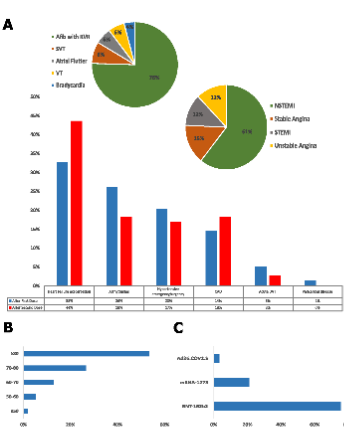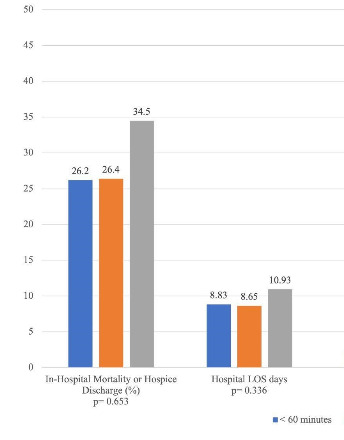Loading
Archive
Recommended Articles
Therapeutic Values of Ketamine for COVID-19-Cared Patients: An Expert’s Point of View
Ketamine has long been used in the field of anesthesia [1]. Its rapid and long-acting analgesic effects associated with its dissociative properties have also established its use in prehospital and emergency department patients.
Gender Disparities in Outcomes Following Pulmonary Embolism Treatment in the Intensive Care Unit; A Multi-center Retrospective Cohort Study
Pulmonary embolism (PE) is a blockage of blood flow in the pulmonary artery bed that can result in a life-threatening and potentially reversible right ventricular failure [1]. PE remains one of the leading causes of poor prognosis and death, particularly when a shock or right ventricular failure occurs [2]. According to studies, PE is generally manifested in a nonspecific manner
Evolving Policies and Practices for Organ Recovery and Non- Lung Organ Transplantation in Candidates Recovering from COVID-2019 - A Review
The Severe Acute Respiratory Syndrome Coronavirus 2 (SARS-CoV-2) pandemic affected Solid-Organ transplantation (SOT) policies and practices worldwide. The medical sector had to adapt to overwhelming concerns regarding patient care, infection-control, healthcare workers’ safety, and limited healthcare resources. Transplant-
The Impact of Fluid Resuscitation Timeliness in Geriatric Patients with Sepsis: A Single Center Retrospective Cohort Study
Sepsis is a key driver of worldwide mortality, representing close to 20% of global deaths in 2017 [1]. Approximately half of patients hospitalized with sepsis are 65 years and older [2]. Delivery of 30ml/kg of crystalloid fluid bolus within three hours of diagnosing sepsis remains a cornerstone of the Surviving Sepsis Campaign (SSC)
Middle Interscalene Block (Alemanno’s Technique): Some Considerations Thirty Years Later
In the last century, starting from 1911 (Kulenkampff) [1], more than twenty upper limb blocking techniques had been described, each of these blocks with its owns strengths and weaknesses (complications). Personally, in the early 80s I still applied Kulenkampff’s supraclavicular technique modified by Moore [2]; in one week I had had two
Cardiovascular Adverse Events after COVID-19 Vaccination
The novel severe acute respiratory syndrome coronavirus 2 (SARS-CoV-2) was declared a global pandemic by the World Health Organization in March 2020 and since then, it has caused huge economic and social turmoil worldwide [1]. In an attempt to reduce the spread across the United States (U.S.) and worldwide, the Food and Drug Administration (FDA) issued an Emergency Use Authorization (EUA) of different vaccines (BNT-162b2, mRNA-1273, and Ad26.COV2. S).
Acute and Chronic Pain Management of the Urologic Patient
Objectives: Here, we review opioid-sparing or opioid-free anesthesia and pain management for urologic procedures and pathologies–urological pain syndromes, kidney stone pain management, development of post-surgical pain syndromes, and prevention. We explore acute management of perioperative pain during and after urologic procedures; additionally, we review the pathophysiology of various urologic pain syndromes along with a variety of interventions, including pharmacologic management, nerve blocks, neurolysis, and neuromodulatory therapies in hopes of educating providers who treat the urologic patient.
Predictors and Associations of Prolonged Tracheostomy in Pediatric Cardiac Surgical Patients
Objectives: To describe the predictors and associations of prolonged tracheostomy duration in pediatric cardiac surgical patients. Method: Prospective study. All pediatric patients below 10 years of age who underwent tracheostomy after cardiac surgery from January 2019 to December 2019, were subdivided into short and long groups according to the tracheostomy duration during the intrahospital stay if more than 21 days. Different variables were compared.
A Review of Antibiotic Resistance in India: Trends and Emerging Role of EDTA (D-EDTA)
Antimicrobial resistance is a significant global issue, posing a serious threat to the effective prevention and treatment of a growing range of resistant bacterial infections. While resistance trends vary among populations, evidence shows that the prevalence of multi-drug resistance (MDR) is increasing. Infections caused by MDR organisms can lead to higher treatment costs, longer hospital stays, and increased mortality rates. Recently, there has been a rise in resistance among Gram-positive and Gram-negative pathogens causing both community and hospital-based infections.



